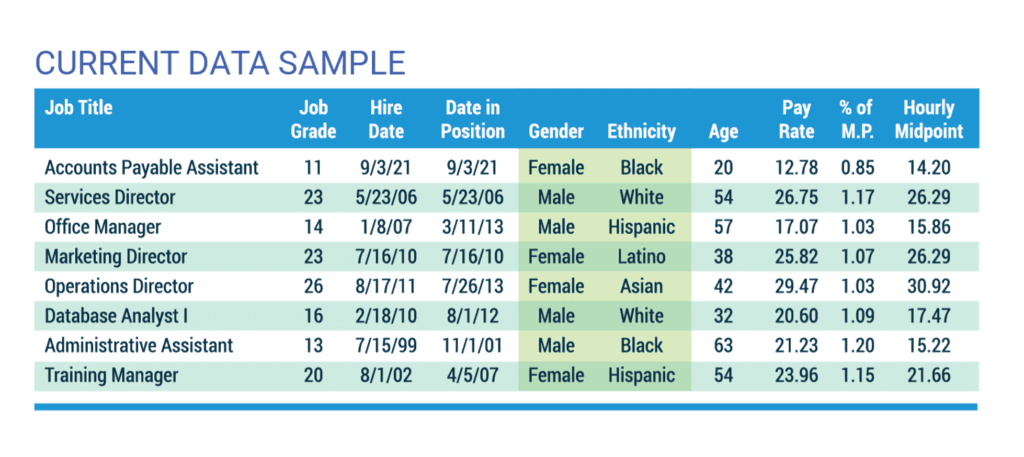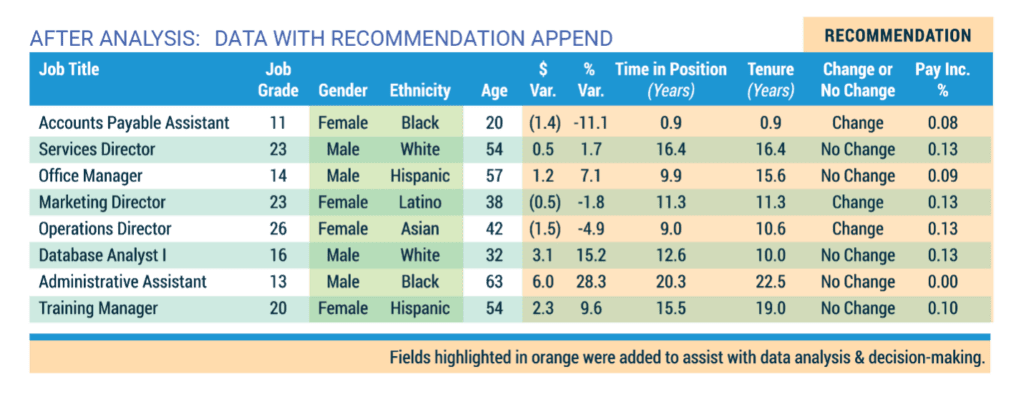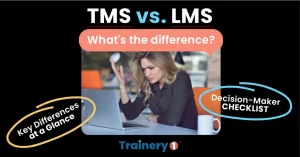When the Equal Pay Act was enacted in 1963, women were paid 59 cents on the dollar compared to male counterparts, a 41% wage gap. Although the gap has narrowed, it still exists.
How Big is the Pay Gap?
In 2023, on average, women are paid 82 cents for every dollar that a man is paid for performing work of similar value.1 The pay gap is even wider for women of color, mothers of young children, and women with disabilities.
In 2022, men were paid $10,381 more than women across the nation.2 Over the course of a 40-year career, women stand to lose approximately $407,760.3 Imagine the impact of that earned income if available to invest in her 401k, for her children’s education, or to purchase a family home. The opportunity for economic growth and financial security is significantly diminished when women and minorities aren’t paid the full rate for which they have worked.
Pay Equity as a Key Retention Strategy in 2023
Pay equity is part of your Employer Brand and can significantly impact your acquisition and retention strategies. It is also an organizational risk if left unidentified or unmanaged.
Like anything else, when pay equity is truly measured and managed, it will improve. We measure organizational performance everyday – it determines whether shareholders buy/hold our stock, and whether donors and grant makers continue to invest in nonprofit organizations. We measure individual job performance, often using it as a basis for bonuses and career advancement. Pay is one of the most concrete and visible measures of a commitment to fairness. If we want a culture of diversity, equity, inclusion and belonging that will serve as a competitive advantage, we must get pay equity right.
Whether organizations accept it or not, they are measured on their commitment to pay fairness and transparency. In fact, 85% of workers are more likely to apply to jobs that list salary ranges.4
Even in locations where there is no legal requirement to post salary ranges, 79% of companies said they are planning, considering, or already actively posting pay range data.4 These companies know that the best employees have choices. With 517,000 new jobs added in January in the U.S. and an unemployment rate of 3.4%, (the lowest jobless rate since May 1969), we can be sure that retention – and pay – will continue to be a key talent strategy this year.
How to Conduct a Pay Equity Analysis: Key Steps
- Protect your organization – partner with legal counsel to establish legal privilege.
- Run an employee census report from your HRIS/payroll system. Group employees based on salary grade (if you have a salary structure) or based on substantially similar work or work of equal value.
- For each employee group, calculate average pay for 1) male versus female and 2) white versus non-white incumbents. This results in your Raw Pay Gap.
- Add columns for tenure, years and level of experience, specialized skills/education, job performance, and other factors that are potentially acceptable reasons for differences in pay.
- Within each employee group, highlight incumbents who earn less than the average for male and white incumbents. Provide rationale for any pay differences that appear to be acceptable reasons.
- If pay anomalies are not based on permissible factors, consider what remediation is necessary. Most guidance suggests that a 2 – 7% difference may be acceptable.
- Develop and communicate your compensation strategy statement to employees. Convey your commitment to reviewing pay equity on an annual basis and assessing all pay decisions as they occur, including promotions, adjustments, new hire offers, etc. This includes decisions about base salaries, bonuses, and any other incentives.
How to Prep Data for a Pay Equity Analysis

Data with Recommendation Append

Looking Beyond the Numbers
Consider whether there is potential for bias (implicit or explicit) in the measures used to determine successful job performance, and whether all incumbents have equal opportunity to meet the performance metrics. For example, if your organization rewards employees for on-call availability, this may exclude some of your employees from meeting that performance metric, so you would want to ensure that there are other ways for employees to demonstrate successful performance. This is where it becomes important to understand root causes so that systemic pay gaps can be addressed, rather than addressing only the symptoms.
Pay Equity Technology Solutions
Since the manual process can be cumbersome, it is worth mentioning a few technology solutions that can help to ease the burden.
Decusoft offers a comprehensive compensation management software called The Compose® Suite. The software provides analytics and dashboard reporting capabilities of employee demographic and compensation data, including current compensation, salary progression, gender, race, ethnicity, age, tenure, disability status, veteran status, salary grade, and location. You can look at compensation by performance rating, ethnicity, age, gender, or a combination of data categories, thus there is ample opportunity to filter by intersectionality.
JER HR Group offers CompBldr, a compensation analysis SaaS (software as a service) solution. This technology allows you to analyze pay by gender, race/ethnicity, age groups and other relevant data in comparison to internal mean pay lines. Pay differences by similar job valued positions and glass ceiling pay disparities are also identified, all presented in easy-to-understand visual reports. Consultants are available for further analysis to evaluate if justified or unjustified systemic pay disparities exist and need to be mitigated or eliminated.
Conclusion
A pay equity compensation analysis helps corporate executives and HR leaders obtain a clear picture of the current state of pay equity within the organization, and identifies where significant pay inequities exist. With this knowledge, you can build a path forward that mitigates risk today, improves your employer brand, and positions your organization for success for years to come. Contact JER HR Group to discuss our compensation and pay equity analysis services in the for-profit, nonprofit, and government/public employee sectors. Contact JER HR Group 866.475.7687 JERHRGroup.com.
Authored by Renee Martin, SHRM-SCP, Senior Compensation Consultant, JER HR Group. The original article appears in HR Professionals Magazine March 2023 issue.
Sources
- Payscale, “2022 State of the Gender Pay Gap Report.”
- Org, Wheelwright, Trevor. “The Gender Pay Gap Across the U.S. in 2022.” March 1, 2022.
- S. Equal Employment Opportunity Commission, “A Message from EEOC Chair Charlotte A. Burrows on Equal Pay Day.” March 15, 2022.
Syndio. “The New Way to Fair Pay.” January 2023.FOLLOW US ON SOCIAL







